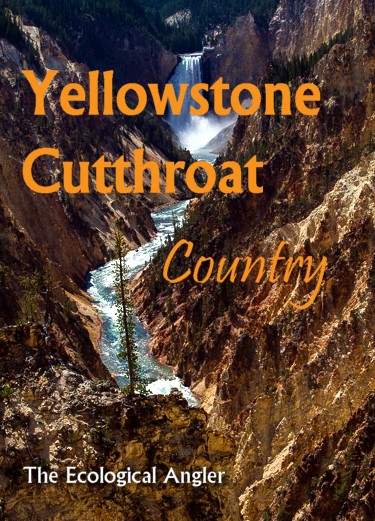Yellowstone Cutthroat

Native Cutthroat Trout Poster


Premium Poster Print of NATIVE CUTTHROAT TROUT available for purchase. Poster measures 22" x 28" on a matte finish. High quality printing provides optimized brightness and sharp detail. Made in USA.
Please allow for three to five business days for order to be processed. You will be notified by e-mail once the poster has been packaged and shipped to the address in the order.
Yellowstone Cutthroat Trout
The Yellowstone cutthroat trout is characterized by medium-large spots with rounded edges that increase in number toward the tail fin. Coloration is highly variable, but the body is usually yellowish brown, silvery, or brassy (Behnke 1992). In Yellowstone Lake, most silvery colored individuals are females or immature males; mature males are usually darker (R. Gresswell, unpublished data). Bright colors are common on individuals (especially on large males) collected from spawning migrations in tributaries of Yellowstone Lake (R. Gresswell, unpublished data).
Yellowstone cutthroat trout appear to be opportunistic feeders that consume food items according to availability (Thurow et al. 1988). Although diet studies for Yellowstone cutthroat trout are uncommon, trout in streams generally feed on drift, benthic invertebrates, and other fish (Allan 1995). Research suggests a strong terrestrial (e.g. hoppers, bettles) influence on drift in some headwater streams where there is a tight linkage with adjacent riparian areas (Romero et al. 2005).
Yellowstone cutthroat trout occupy a diversity of habitats. Lacustrine populations are found in waters ranging from the size of small beaver ponds to large lakes (e.g., Yellowstone Lake). Fluvial populations were historically common in large rivers such as the Snake River above Shoshone Falls, Idaho and the Yellowstone River near Livingston, Montana. Many of these large-river populations have declined or disappeared. Nevertheless, Yellowstone cutthroat trout are still abundant in many small headwater streams (May et al. 2007).
Historic Distribution
Behnke hypothesized that the Yellowstone cutthroat trout once occupied the entire Snake River drainage, but subsequently, rainbow trout replaced the subspecies below Shoshone Falls and rainbow trout and westslope cutthroat trout replaced Yellowstone cutthroat trout in the Salmon and Clearwater drainages.
Historical habitat for Yellowstone cutthroat was estimated to include 17,721 miles of stream and 61 lakes. These historical habitat estimates represented a refinement of historical estimates obtained in 2001 (i.e. 17,393 miles; 118 lakes). The estimate of currently occupied habitat was 7,527 miles (43%) of historical habitat. The number of lakes currently occupied with Yellowstone cutthroat was estimate to be 205.
Historically, these fish occupied much of the Yellowstone River basin spreading across southern Idaho, Montana, northwestern Wyoming, and small regions of Nevada and Utah. Today, however, genetically pure Yellowstone cutthroat are found in less than half of their historic range and are mostly restricted to waters within the boundaries of Yellowstone and Grand Teton National Parks and surrounding Forest Service lands.
